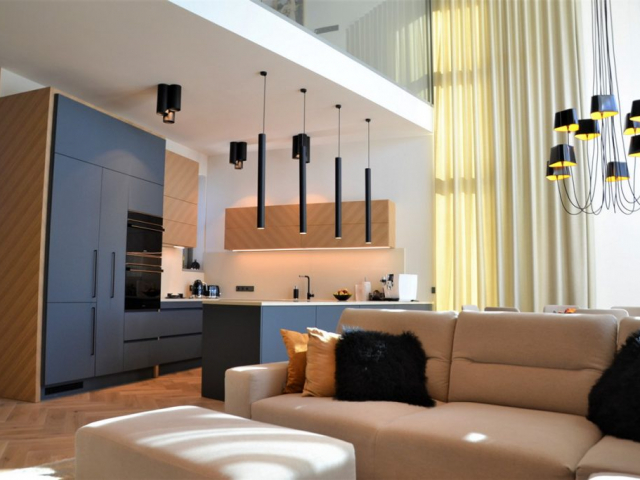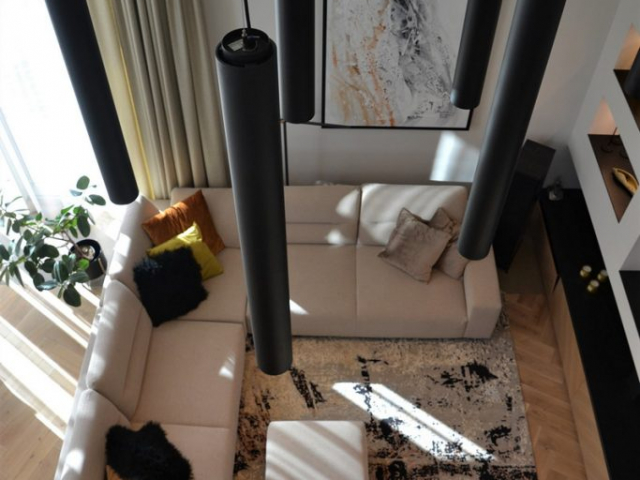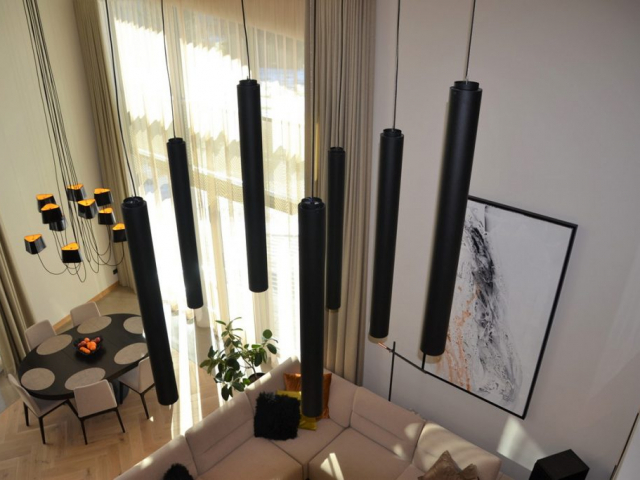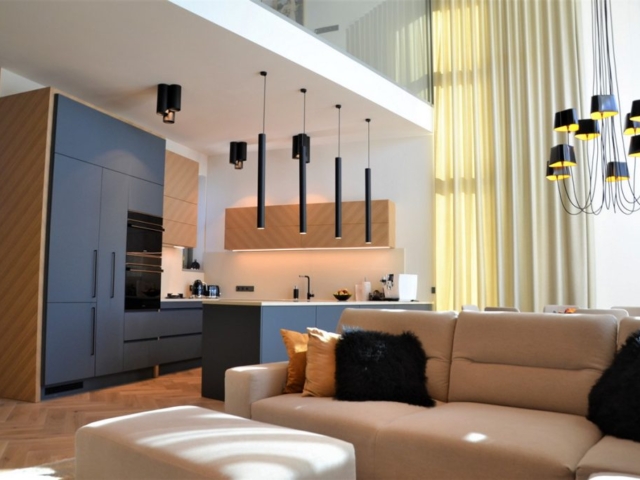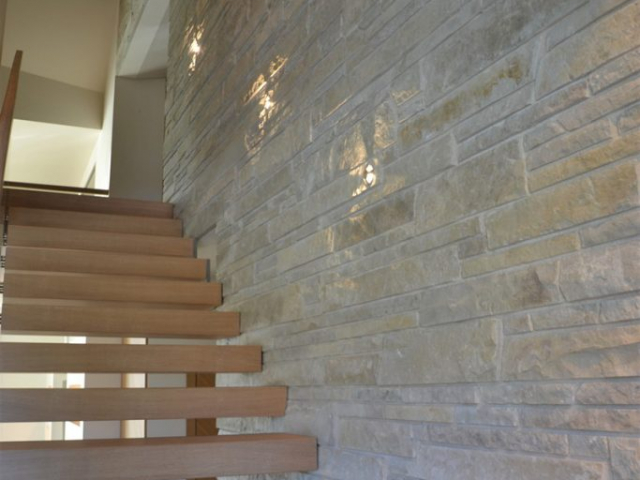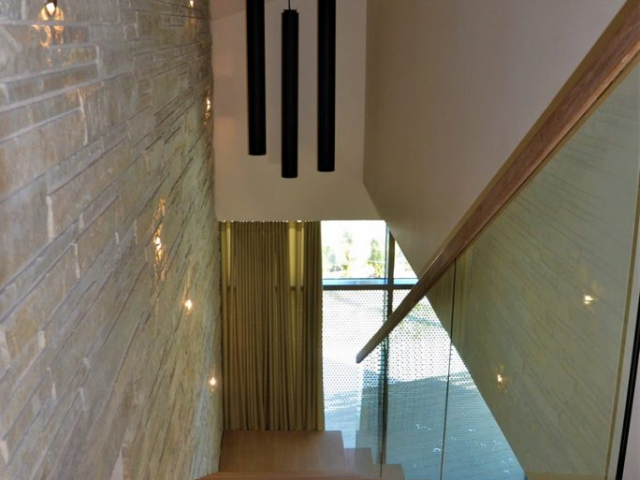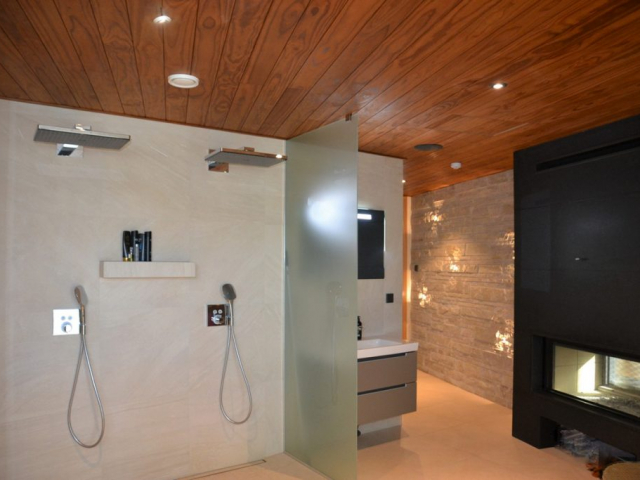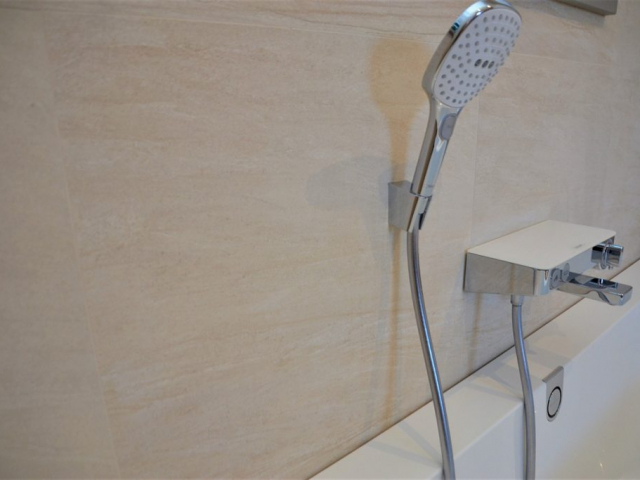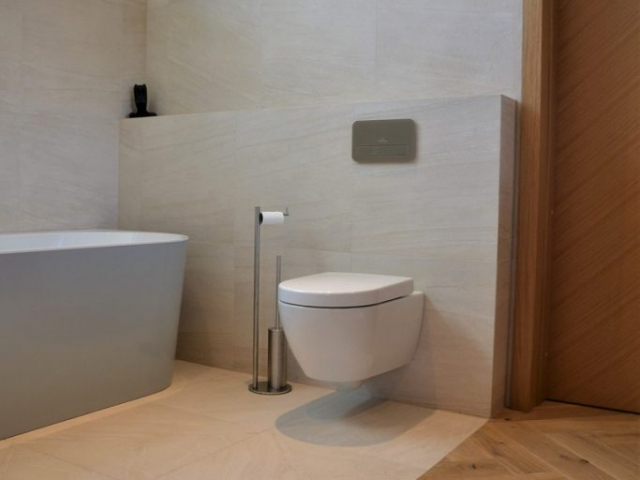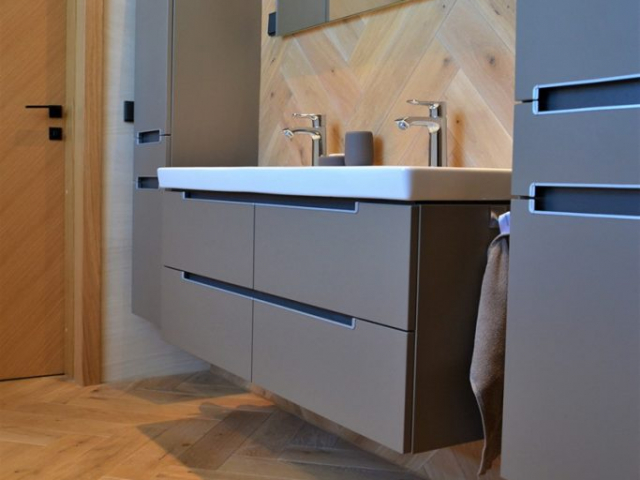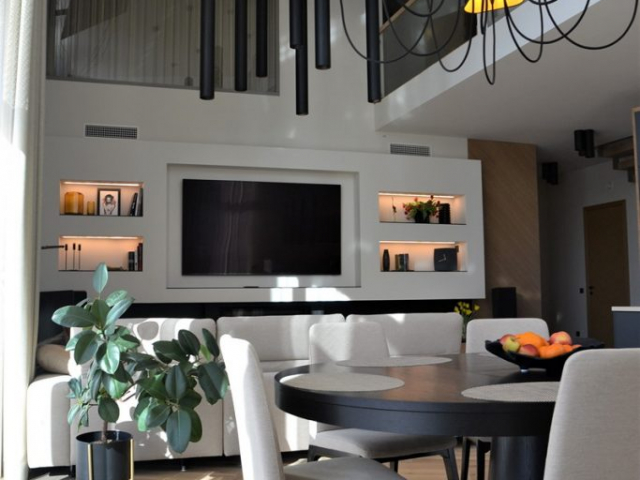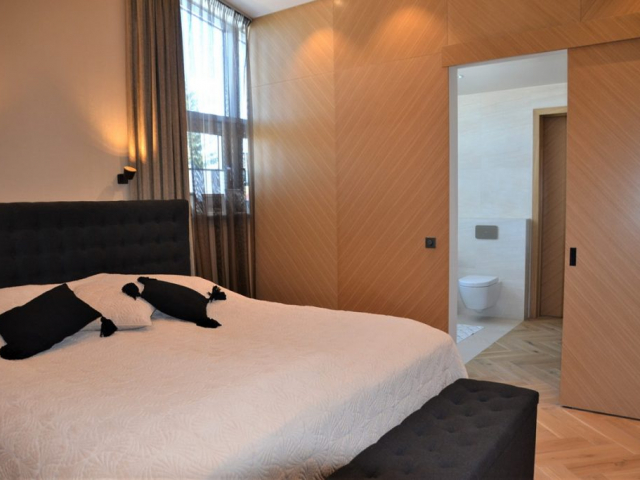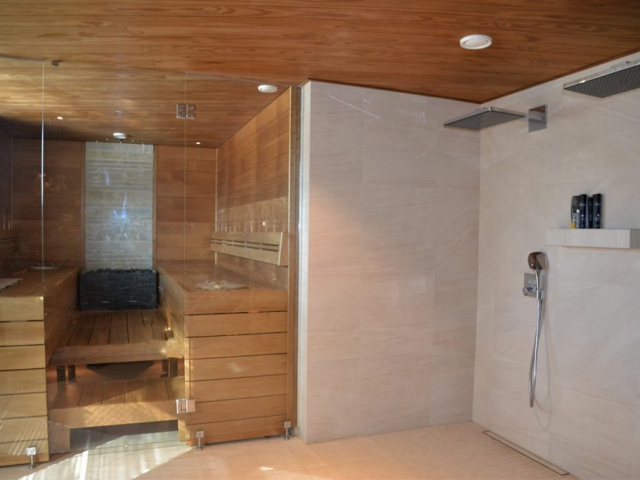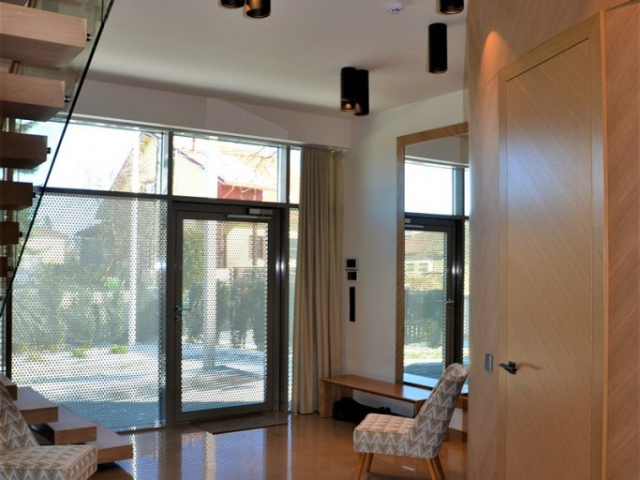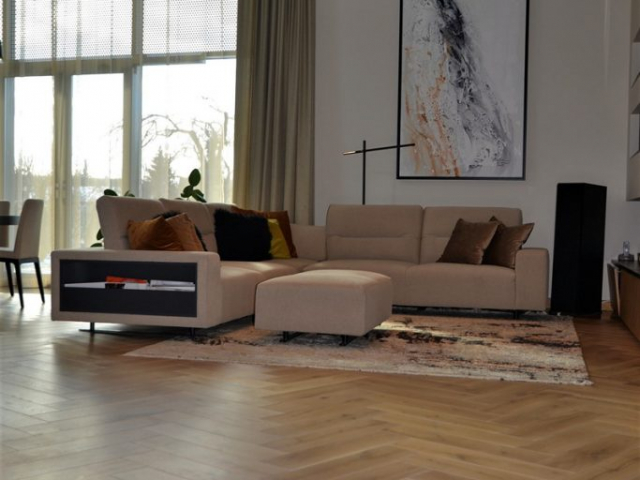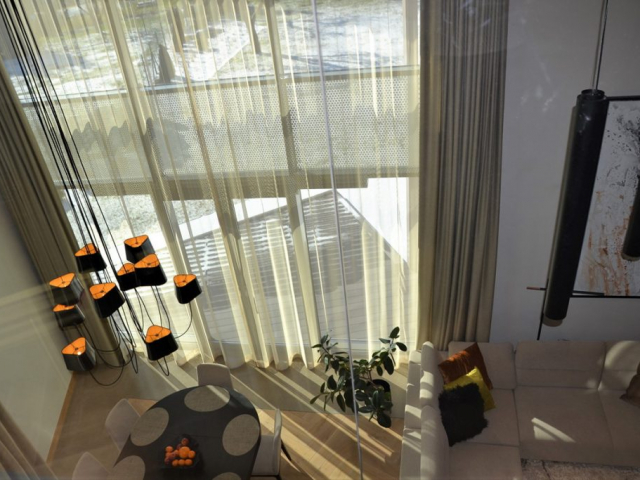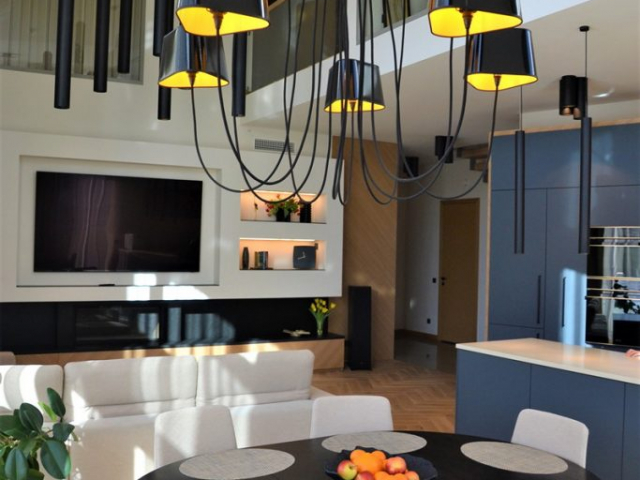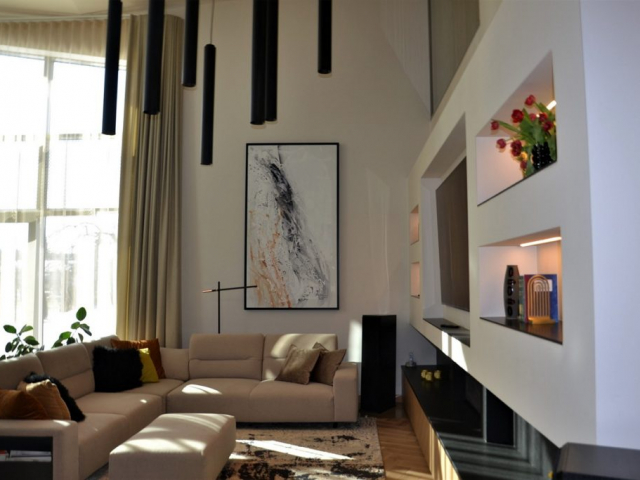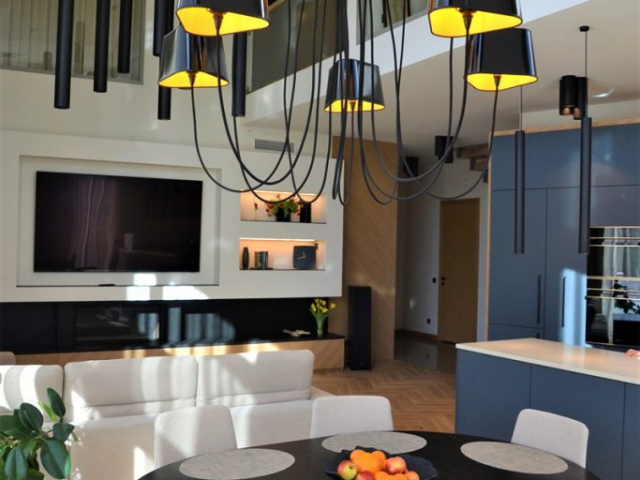Private house in Tallinn
The private house was designed by architect Enn Laansoo.
Interior architect Ingrid Kuuli
Cooperation with the client and the architect began at the design stage of the private house.
The interior design solution of the double detached house follows the vision and vision of the architect. Open plan, bright and grand hall, living room - kitchen, three bedrooms, game room, study, utility rooms, wardrobes, sauna entrance, steam room, storage, garage, etc.
We used the limestone used on the exterior facade both on the staircase wall through the two floors and on the wall of the fireplace in the front room of the sauna on the first floor.
The purpose of the private house, designed in a modern way, was to create a cozy home. The living room part is over two floors - large window areas and high ceilings give the room space and light.
The challenge was to make it cozy - homey.
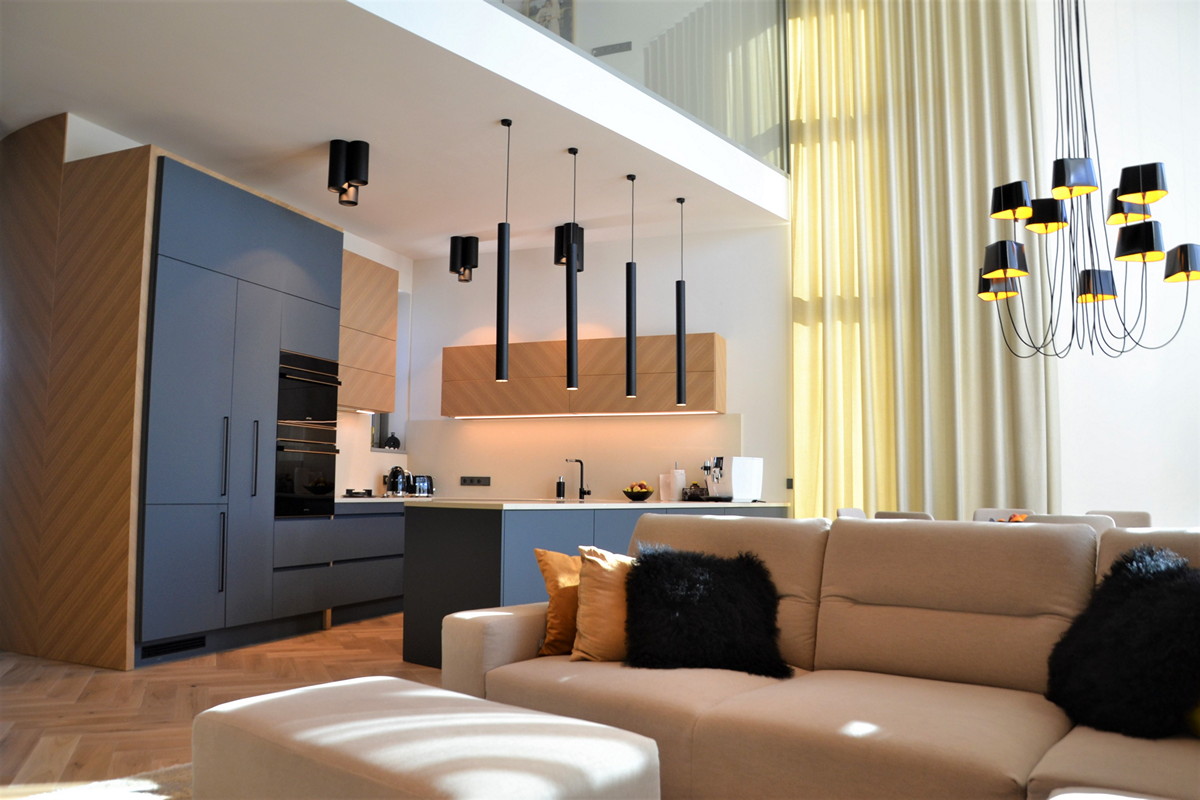
The landlady's desire was definitely from the beginning - to find the right place for the family relic - the old piano.
We placed the piano in front of the hallway's limestone wall. On the wall of the stairs finished with limestone through the two floors, chaotically small Led lights are placed that show light from four directions. Beams of light bring out the relief of the main stone - different levels and colors. We used the same idea in the shower room - on the wall of the fireplace in the rest room, which is also covered with limestone.
We installed a fireplace with a continuous hearth on the wall between the living room and the shower room. Since the part of the wall between the steam room and the shower room – the relaxation room – is made of full glass, the effect is very good when you sauna in the steam room. The steam room and the shower room - the rest room is bound to be even more spacious by a running board parallel to the wall installed on the ceiling, which is on the same level in both rooms.
On the floor, oak parquet in a herringbone pattern is used throughout the two floors in the living quarters.
A very interesting solution was the use of parquet on the wall of the sink in the bathroom, which runs so-called. floor to wall.
Why did we choose the herringbone pattern? Since most of the walls and ceilings of the detached house are at an angle or slope - the diagonal is drawn in a fishtail pattern.
This pattern always works well on large surfaces.
In the spacious hallway, toilet and cloakroom, we used a beige monolithic cast EPO floor. In the garage and utility room, we added surface hardener to the EPO.
The use of diagonal veneer is a special order for interior doors, the curved wardrobe wall in the hall is covered with diagonal oak veneer boards, which could be covered with a surface - divide the wall into equal parts, taking into account the maximum width and height of the veneer board. The veneer boards could be installed next to each other in such a way as to repeat the herringbone pattern on the floor. One board with the diagonal wood grain to one side and the other board with the opposite wood grain to the side.
Among the tones, oak tone, different shades of beige, white and dark gray and variations of these colors are selected. We used Caparol Cremeweib as the main tone of the private house through two floors. In the toilets, we finished the walls with Caparoli decorative paint Stucco di Perla.
The house is accented by custom-made black cylinder-shaped ceiling lights of different diameters and sizes throughout the two floors.
Above the dining table hangs the Petit Nuage ceiling light with a black and yellow design.
All the built-in furniture in the private house is custom-made according to the drawings.
Every detail and accessory is thought out. Cooperation with the family - the trust was very good and both sides were satisfied with the result.



